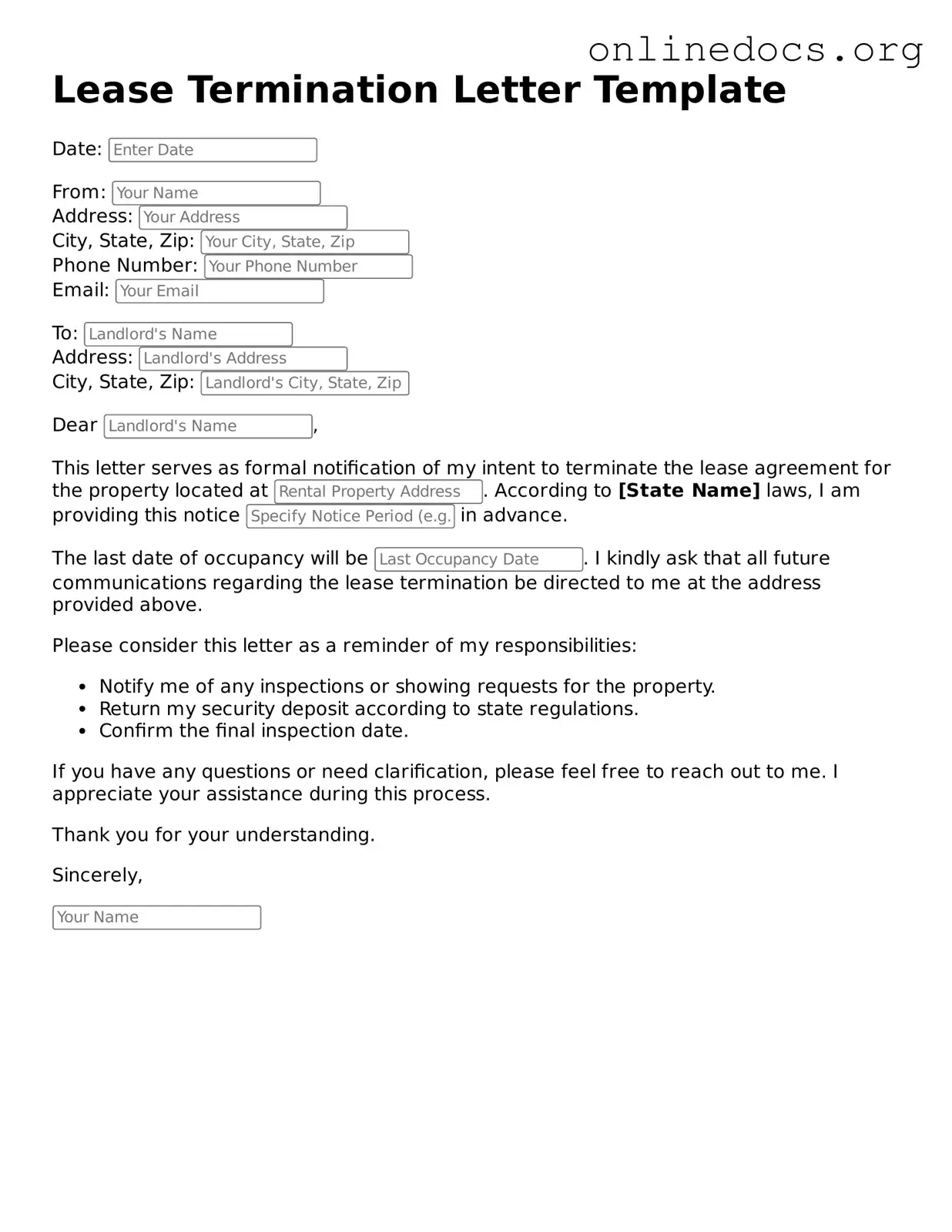A Notice to Vacate is a document that a landlord or tenant uses to inform the other party of their intention to terminate the lease. This notice typically specifies the date by which the tenant must vacate the property. Similar to a Lease Termination Letter, it serves as a formal communication, providing clear expectations and timelines for both parties. It helps prevent misunderstandings and ensures that all parties are aware of their responsibilities as the lease comes to an end.
A Rent Payment Notice is another related document that serves to remind tenants of their rent obligations. While it focuses on payment, rather than termination, it can lead to lease termination if rent is not paid. Like a Lease Termination Letter, it is a formal notification that helps maintain clear communication between landlords and tenants, ensuring that both parties understand the consequences of non-payment.
A Lease Renewal Notice is issued when a landlord wants to extend the current lease agreement. This document outlines the terms of the renewal, including any changes in rent or conditions. Similar to a Lease Termination Letter, it provides essential information about the future of the tenancy. Both documents play a crucial role in defining the relationship between the landlord and tenant, whether that relationship is continuing or coming to an end.
A Move-Out Checklist is a practical tool that tenants can use when preparing to leave a rental property. While it doesn’t serve as a formal notice like a Lease Termination Letter, it complements the process of moving out. It outlines the tasks that need to be completed before vacating, ensuring that tenants leave the property in good condition. This document helps facilitate a smooth transition, just as a Lease Termination Letter sets the stage for the end of the lease.
A Security Deposit Return Letter is a document that landlords send to tenants after they have vacated the property. This letter details the return of the security deposit, including any deductions for damages or unpaid rent. It is similar to a Lease Termination Letter in that it marks the conclusion of the tenancy and provides important financial information. Both documents are essential for ensuring that all financial obligations are settled and that the end of the lease is clearly communicated.
A Lease Assignment Agreement is used when a tenant wishes to transfer their lease obligations to another person. This document outlines the terms of the assignment and requires the landlord's approval. While it differs from a Lease Termination Letter in that it does not end the lease, it represents a significant change in the tenancy. Both documents require clear communication and agreement between the landlord and tenant, ensuring that all parties are informed of their rights and responsibilities.
In the context of rental agreements, it's important to have various documents that facilitate communication and understanding between landlords and tenants. One such document is the Lease Agreement form, which serves to define the terms of tenancy. To learn more about this essential document, you can visit https://nypdfforms.com/lease-agreement-form/, where you will find important information regarding its components and significance in creating a harmonious rental relationship.
A Sublease Agreement allows a tenant to rent out their leased property to another individual, with the landlord's consent. This document details the terms of the sublease, including the duration and payment arrangements. Like a Lease Termination Letter, it formalizes a change in the occupancy of the property. Both documents are vital in managing the rental relationship and ensuring that all parties understand their roles.
A Rental Application is a document prospective tenants fill out when seeking to rent a property. It collects essential information about the applicant, including their rental history and financial background. While it is not directly related to lease termination, it is part of the rental process that leads to the signing of a lease. Both the Rental Application and the Lease Termination Letter are crucial in establishing and concluding a rental relationship, ensuring that both landlords and tenants are adequately informed.
A Lease Agreement is the foundational document that outlines the terms of the rental arrangement. It details the rights and responsibilities of both landlords and tenants. While a Lease Termination Letter signifies the end of this agreement, the Lease Agreement itself is essential for understanding the obligations that existed during the tenancy. Both documents are key components in the rental process, ensuring clarity and mutual understanding between the parties involved.
